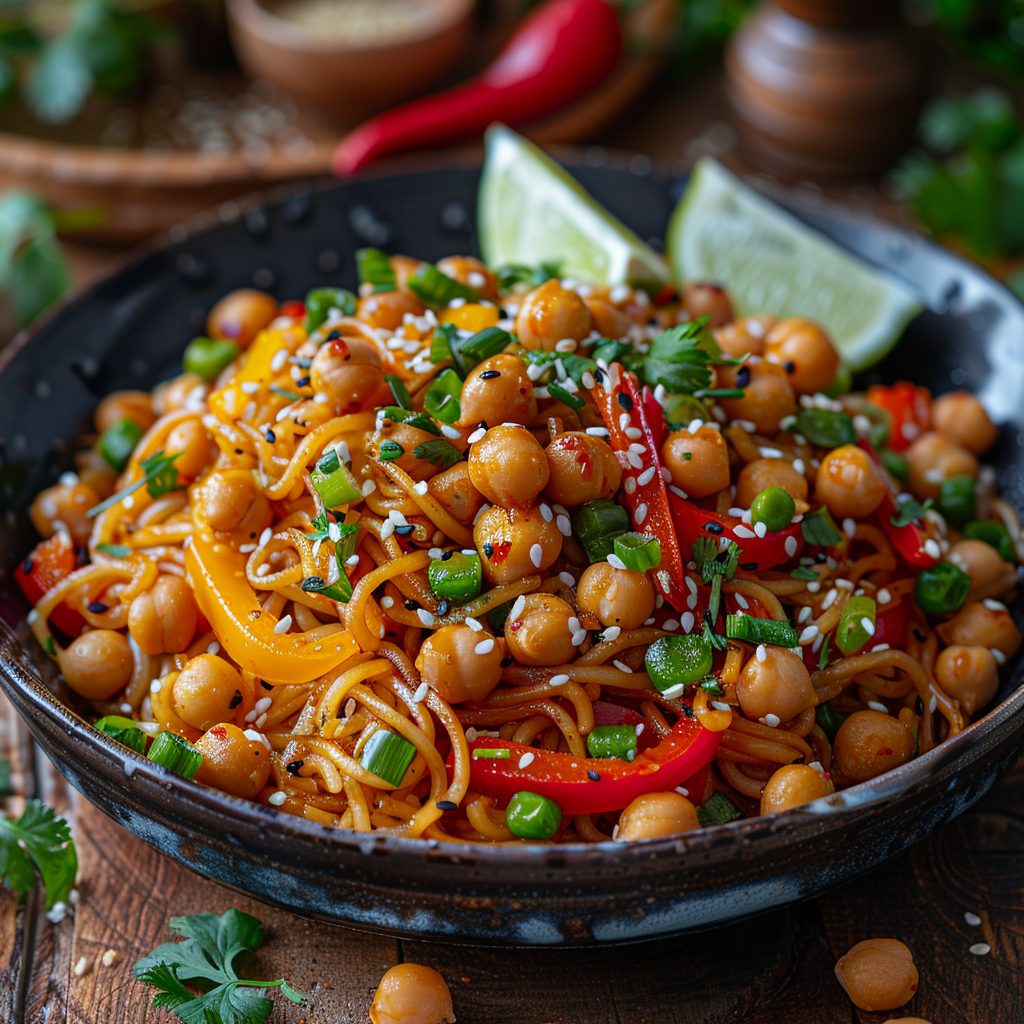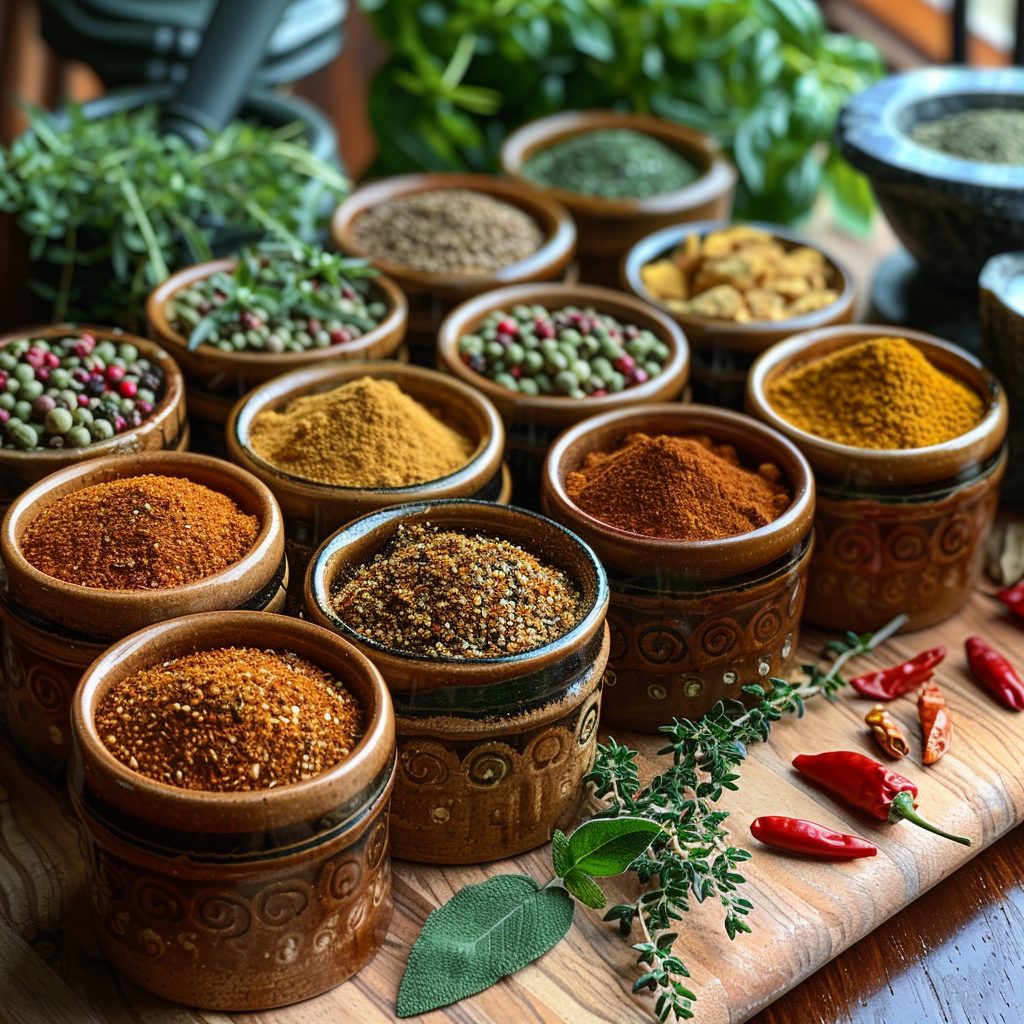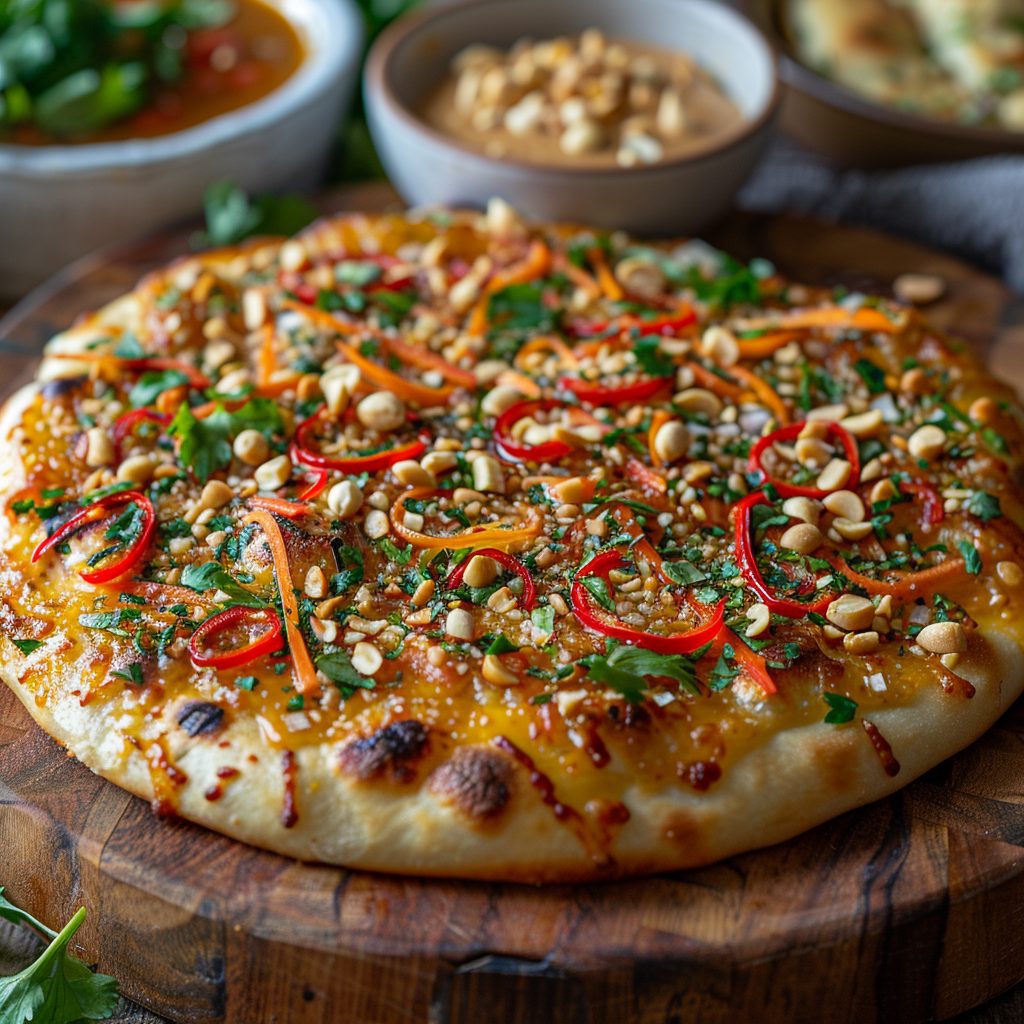Vegan Fusion Cuisine: Exploring Plant-Based Global Flavors
Once upon a less enlightened time, I found myself staring down at a plate of what can only be described as a culinary conundrum: a vegan steak. Yes, you read that right. As a die-hard carnivore, the idea of plant-based meat was as bewildering to me as a fish riding a bicycle.
But one bite of that smoky, marinated tempeh “steak,” and my taste buds were on a roller coaster they never wanted to get off. I was hooked, line, and sinker, and I’ve been on a quest for the most delectable vegan fusion dishes ever since.
Now, let me take you on a gastronomic journey that defies the laws of traditional cuisine. Imagine a world where chickpea meets chow mein, where coconut cream pirouettes with pasta, and where your dinner is not just a meal but a statement.
It’s not just about the health benefits or the environmental impact; it’s about flavor adventures that can make your palate do a happy dance.
So, buckle up, buttercup, because I’m about to introduce you to some plant-based concoctions that will make even the most devout meat-lovers question their allegiances.
Key Points That You Should Know
1. I discovered that the concept of vegan fusion cuisine is incredibly diverse and champions the merging of distinct culinary traditions without the use of any animal products. By integrating ingredients from multiple cultures while adhering to vegan principles, these dishes showcase the creativity and adaptability of modern vegan cooking.
2. Through my culinary explorations, I’ve noticed that the cornerstone of making outstanding vegan fusion dishes often lies in the use of rich, plant-based substitutes. By ingeniously using alternatives like cashew cream for dairy, or jackfruit for pulled pork, I can recreate classic flavors and textures that appease both vegans and non-vegans alike.
3. One key aspect of vegan fusion I’ve come to appreciate is the significance of spices and herbs in enhancing flavors. In my kitchen, I’ve learned that leveraging the bold spices traditionally used in regional cuisines, such as turmeric in Indian cooking or cumin in Mexican recipes, is essential in creating authentic and memorable vegan fusion experiences.
4. I’ve found that successful vegan fusion relies heavily on the balance of flavors and nutritional content. By incorporating a varied selection of vegetables, legumes, grains, and nuts, I ensure that my dishes are not only flavorful but also provide a holistic range of dietary benefits. This approach to cooking has underscored the importance of conscientious meal planning in my pursuit of fusion dishes.
5. Finally, I am convinced that the presentation of vegan fusion cuisine plays a pivotal role in its enjoyment. I take thoughtful consideration in the arrangement and garnishing of my dishes, as I believe that the visual appeal can greatly enhance the overall dining experience. The vibrant colors of fresh produce paired with artistically presented elements transforms each dish into a visually stunning creation that tempts the senses before the first bite is even taken.
Exploring the World Through Vegan Fusion Cuisine
When I think of fusing flavors in my kitchen, the creativity involved is exhilarating. I’ve found that vegan fusion dishes are about harmoniously blending unique tastes and nutritional profiles from different cultures. It’s a culinary tapestry that can surprise and delight any palate.

Pairing Ingredients for Maximum Impact
In my experience, the key to a memorable fusion dish lies in the pairing of ingredients. I always aim for a balance of textures and flavors.
Consider a dish like spicy Korean kimchi served with creamy vegan tacos; it’s the juxtaposition of tangy, fermented flavors with the richness of cashew-based creams that can transform a meal from ordinary to extraordinary.
Creative Reinterpretations with Plant-Based Alternatives
I relish the challenge of reinterpreting classic meals as vegan fusion marvels. For instance, a vegan ‘butter chicken’ made with succulent jackfruit and a blend of spices captures the essence of this beloved dish, but with a meat-free twist that’s kind to the planet.
The Spice of Life
I consider spices to be the soul of fusion cuisine. They’re not just about heat; they encapsulate flavors, cultures, and traditions. In my vegan fusion cooking, I use spices like turmeric, cumin, and coriander to imbue my dishes with depth and a sense of history.

Visual Appeal in Vegan Fusion Cooking
I value the visual appeal of dishes as much as the taste. A vibrant vegan sushi bowl with pink pickled radishes, green edamame, and golden tofu can be as much a feast for the eyes as it is for the palate.
Sustainability in Every Bite
Whenever I prepare vegan fusion dishes, I’m conscious of the sustainability of my ingredients. Did you know that by choosing plant-based options, it’s not just your health that benefits but also the environment? It’s true, and statistics from research affirm that a vegan diet could significantly reduce carbon footprints.
Satisfying Flavor Profiles
I’ve learned that to satisfy even the most discerning taste buds, my vegan fusion creations must provide a full flavor profile – sweet, salty, acidic, and bitter – in every dish.
A Thai-inspired salad with sweet mango, salty peanuts, zingy lime, and bitter greens achieves this balance beautifully.
Tips for Aspiring Vegan Fusion Cooks
To DIY these multicultural masterpieces, I suggest starting simple. A staple grain like quinoa can become the base for countless variations.
Toss it with black beans, corn, avocado, and a lime-cilantro dressing for a Latin twist or mix it with stir-fried vegetables and a savory sauce for an Asian flair.
Sharing Vegan Fusion With Friends and Family
I find that sharing food is one of life’s greatest joys, and vegan fusion dishes are perfect for this. They’re a conversation starter, a way to bond over the art of food, and a chance to learn about different cultures.
What Are My Go-To Vegan Fusion Recipes?
My personal go-to vegan fusion recipes include a Thai pizza with peanut sauce and colorful veggies, a Moroccan spiced chickpea burger, and a rich, coconut milk-based African peanut stew. Each one brings a piece of the world to my dining table.

Do You Want to Create Stunning Vegan Fusion Dishes?
- Start by familiarizing yourself with a variety of spices – they’re the foundation of flavor.
- Learn the basic cooking techniques from different cuisines – this will help in understanding how to bring out the best in your fusion dishes.
- Don’t be afraid to experiment. Sometimes the best dishes come from a happy accident in pairing unexpected ingredients.
- Play with color and texture. Remember that we eat with our eyes first, so make your dishes as visually appealing as they are delicious.
- Always taste as you go. Balancing flavors is key, and your palate will tell you what a dish needs to reach perfection.
Final Thoughts on Vegan Fusion Dishes
I’ve always found that vegan fusion dishes not only spark culinary creativity but also can be a delicious and healthy way to dine. Incorporating the best of numerous global flavors ensures that eating plant-based is never dull.
With each innovative combination, there’s potential not just for a delicious meal, but also for a greater understanding and appreciation of world cultures—with respect for animal welfare as an added bonus. Remember, the essence of vegan fusion is exploration, so don’t hold back; dive into this exciting culinary journey with an open mind and an adventurous spirit!
One thing I cherish about vegan fusion is its inclusivity. This approach to cooking brings people together regardless of dietary preferences, and I’ve seen it spark joy at gatherings where taste is the universal language.
So, let your creativity shine, and let those flavors meld. Here’s to the delicious diversity that vegan fusion brings to our tables!
FAQ
What are Vegan Fusion Dishes?
Vegan fusion dishes combine elements from various cuisines while maintaining a plant-based ethos. Think of it as a culinary blend, merging flavors and ingredients from around the world without any animal products. It’s a creative way to explore global tastes and keep meals exciting!
Can traditional recipes be adapted into vegan fusion criteria?
Most definitely! Many traditional recipes can be transformed into vegan-friendly dishes with some innovation. Substituting animal products with plant-based alternatives often does the trick, like using nut milk instead of dairy or tofu in place of meat.
What are some staple ingredients in Vegan Fusion cooking?
Key ingredients often include legumes, grains, nuts, seeds, and a bounty of vegetables and fruits. Spices and herbs essential to the original cuisines play a significant role, helping to maintain authentic flavors.
How do I ensure my Vegan Fusion dishes are nutritionally balanced?
Emphasize variety — combining different food groups, like proteins, carbs, and fats from plants, ensures a well-rounded meal. Don’t forget about vitamins and minerals; colorful veggies and fruits are your best friends here!
Is eating Vegan Fusion food more expensive?
It doesn’t have to be. While specialty ingredients can be pricier, focusing on whole foods and seasonal produce can be cost-effective. Planning and prep can also help manage expenses without skimping on flavor or quality.
What is the best way to learn Vegan Fusion cooking?
Experiment! Start with familiar recipes and slowly introduce new spices and ingredients. Cookbooks, cooking classes, and online resources also provide fantastic guidance for your culinary adventures.
Can Vegan Fusion cuisine cater to food allergies?
Yes, it offers flexibility to accommodate various dietary needs. Since you’re selecting ingredients, it’s easier to avoid allergens and customize dishes according to personal health requirements.
Are there any quick Vegan Fusion dishes for busy weeknights?
Absolutely! One-pot dishes, bowls with a mix of raw and cooked components, or quick stir-fries can be both time-saving and delicious. Prep ingredients ahead for even faster assembly.
How do flavor profiles work in Vegan Fusion recipes?
Flavor balance is key. Blending spices and herbs from different cuisines can be delightful when done thoughtfully. It’s all about experimenting until you find the harmonious blend that sings on your palate.
Are there any health benefits specific to Vegan Fusion cuisine?
Indeed, by drawing from diverse dietary traditions, Vegan Fusion can lead to a rich intake of various nutrients. Plus, its plant-based core supports a heart-healthy, low-fat diet rich in fiber.